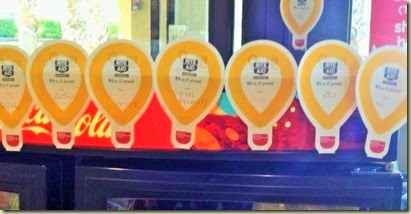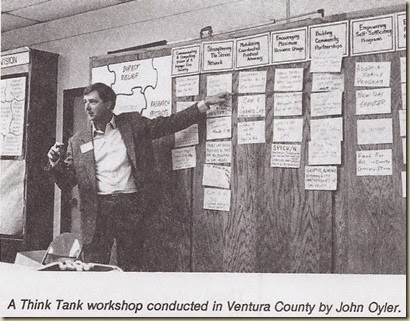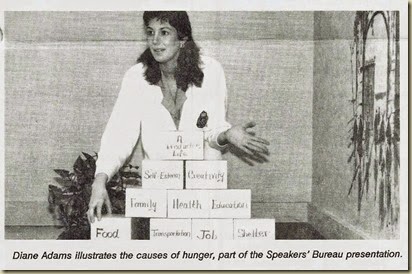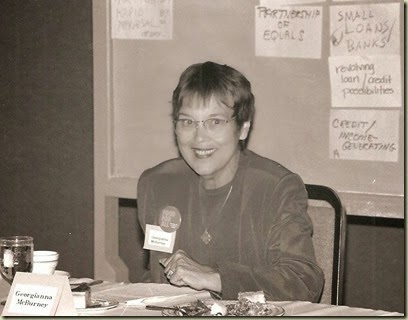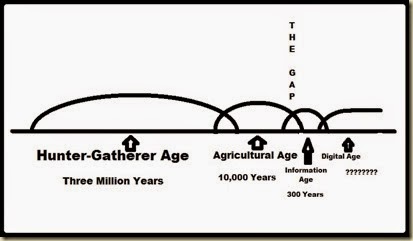Hunger and malnutrition, homelessness, diseases, poverty, mental illness, human rights, climate change and the environment, child abuse, human trafficking . . .on and on. All big issues in themselves. All still with us.
I was involved in the very beginning of a simple idea using a scan-able bar code to make it possible for customers to make charitable donations at supermarket check stands. It had never been done before. Along with our having to figure out all the logistics and systems, we had to demonstrate the potential for funds to be raised simply and easily by supermarkets. Today, thanks to the proliferation of the scanner technology and the computerization of systems to manage money, many billions have been raised for all of the above causes, and more. The system has evolved and expanded into many other venues. And while raising money has not and cannot solve any of them, millions of everyday folk now have the opportunity to add a small donation to their bill as they make a purchase for themselves or their family. This is the legacy of FOOD FOR ALL.
FOOD FOR ALL at Kickoff, first and future donation cards
When I reflect on the legacy of FOOD FOR ALL, what appears is the image of a jewel that was found buried in a box with a note attached to it saying “This jewel must be given away or it will become a worthless stone.”
For several years, when I would encounter an individual with a little table and a “please help” sign at the entrance to a supermarket where we shopped, I would smile and say to myself “I gave at the check stand.” This was because the FOOD FOR ALL program was offered by that retailer, making it easy to just pick up a card and have it scanned and added to my grocery receipt as a tax-deductible donation. I also knew that the donation would be well-managed and that most of it would be applied to finding solutions to end hunger. I knew this because I was one of the founders of FOOD FOR ALL. I knew this because I had helped develop a system to train local people to staff volunteer grant boards, who continually educated themselves and their grantees on addressing root causes of hunger. I knew this because we were from the beginning continually educating ourselves about root causes of hunger and approaches that worked in addressing it. I knew this because the FOOD FOR ALL organization was always about much more than raising money and giving grants.
When Linda came up with the idea of a simple display at supermarket checkouts holding a bar-coded card, making it easy to add a donation to stop hunger, only about half of retail stores in the country even had the new scanning capability. It was an added chore for companies to do fundraising promotions. They either had to set up barrels for product donations or cash register coin boxes that were a nightmare for accounting and easy marks for fraud. No one anywhere had done before what FOOD FOR ALL made possible. Today, not only supermarkets but retailers of all kinds can and do offer their customers a chance to add a donation to their purchases, for any number of causes. “Would you like to add a donation to your bill?” followed on the screen by a button to push or a touchscreen image to touch with a “yes” makes it so easy. Some supermarkets still carry the donation cards we designed year-round, with their own logos and promotional materials. More implement a seasonal fundraising appeal using the cards or smaller paper tickets.
Donation Balloons with bar codes at Rite Aid Drugstores
Our original FOOD FOR ALL supermarket in our town of Redlands, California, Gerrards Cypress Center, displays donation cards of $1, $5, and $10 with proceeds going to Redlands Family Service. Stater Bros. Markets created their own nonprofit in 2008, Stater Bros. Charities. The company has continued the year-round program using the same display racks we launched their stores with in 1990, but with their own company information on the $1, $3, and $5 donation cards. Stater Bros. Charities support a variety of local nonprofit agencies, but we still hear occasionally from some of the anti-hunger organizations we funded who are receiving grants. I’ve heard of a few other supermarket chains who have kept the year-round approach going, but I can’t call any by name at the moment.
Top: Gerrards Cypress Center; Bottom: Stater Bros. Markets
FOOD FOR ALL was the first to develop a program that could be replicated in any retail supermarket: “A simple way of giving to help end hunger; just add a scan-able donation card to your grocery purchases every time you shop.”
We were also first in other ways. The food security movement was originally a concept that grew up in the late 1980s. It grew out of the awareness of many anti-hunger activists that what was needed was local community access to affordable, safe, nutritious food. This encompassed support for community gardens, community supported agriculture (e.g., farmers markets), encouraging supermarket operators to enter under-served areas, lobbying for better food policies at the local and state levels. FOOD FOR ALL was one of the first funding organizations to provide grants to such projects.
It is difficult to measure the impact of another pioneering effort of FOOD FOR ALL, but we were known among grant recipient agencies and anti-hunger activists for bringing together both local and international leaders in the field to work on strategies to make a difference in dealing with the hunger issue. Our early Think Tanks on Hunger and Sharing Approaches that Work conferences were a welcome change for those involved in the day-to-day struggle of trying to make an impact on such a difficult issue.
Think Tanks on Hunger—educated us and volunteers on hunger
FOOD FOR ALL from the beginning had an ambitious and pro-active education component, about hunger, its causes and solutions. We knew that customers and store employees especially, needed to be made aware of the importance of adopting the habit of giving and encouraging other customers and employees as well. In addition, community groups were part of the support system we needed to reach. We created several programs to provide the necessary education: The Store Ambassadors, a customer and/or employee in each store to monitor displays and educate others about FOOD FOR ALL; A speakers bureau, to make a simple presentation to local groups on the “Components of a Productive Life,” showing how the loss of any one of the elements, job, housing, health, transportation, could place anyone at risk. The presentation featured a pyramid of boxes, each box representing one of the essentials, and then the presenter pulled out one box at a time until the entire pyramid collapsed. Regular gatherings of the Local Grant Boards for support and sharing learnings were also an important piece of the support system.
An illustration of how FOOD FOR ALL was always pushing the envelope is the way we tried to operate from the big picture and the broadest context possible. Georgianna McBurney, one of our five founding board members, headed up our Funds Distribution Advisory Board for twelve years. Georgianna was a profound and futuristic thinker. One year she came up with a “talk,” which came to be known as “the Gap Talk.” She presented it to one of our meetings in the late 1980s. The gist of it is that we are living in a gap between two ages, the industrial age and the information age. The image that accompanied the talk was a timeline with overlapping half-circles. The first circle, the longest, represents the hunter/gatherer age, which lasted for three million years. The second, the agricultural age, for about ten thousand. The third, the industrial age, and we were just at the end of it after only about three hundred years, when the information age hit us. We do not yet know how to live in it. All of the institutions of society, government, economic, health, education, were built for the industrial age, but with the rapidity of change and the complexity of the information revolution, they are no longer working. The world seems to be crumbling around us. Today, we might even add an additional bit of complexity. We seem to have moved from the information age into what might be termed the “digital age.” This is characterized by virtually all of our human interactions being done digitally. Facebook, You Tube, Google, Twitter, smart phones.
Georgianna McBurney—Our resident futurist
Illustration for the “Gap Talk”
This presentation on the Gap did not give us any better way of deciding how grants should be given, or how agencies could get a handle on the intractable issue of hunger and homelessness. But when people began to understand their situation from a historical perspective, it seemed to provide some relief from the feelings of guilt that accompany any effort to save the world.
All of this is part of the legacy of FOOD FOR ALL. I am glad I am part of it. Every time I enter a store and am asked “Would you like to make a donation to . . . ,” I respond with something like “I’m glad you asked. What is my donation for?” Sometimes I respond with a ‘yes’ and sometimes not. We still shop at Stater Bros. Markets every week. Every week I pick up a donation card and add it to the groceries. Sometimes the checker says thank you. Occasionally I mention that my wife and I founded the program they are continuing and ask “How is Jack Brown doing?” When my donation is acknowledged with a ‘thank you,’ I just smile and say “You’re welcome!”
I’m happy Linda got me involved with her idea. I’m honored to have met and worked with so many wonderful human beings in the thirteen years I was privileged to lead FOOD FOR ALL, those inside and outside the food industry. I enjoyed reading all the letters of thanks from the many anti-hunger agencies and food industry folk, as well as going through all the press clippings and articles that were written during our tenure.
Occasionally, I run into someone in Redlands who still remembers FOOD FOR ALL from those early years, and they ask “Are you and Linda still doing that program for hunger?” Or “Is that FOOD FOR ALL program still going on?” I usually just smile and respond with something like “I’m retired, but I’m sure there are people who are still working hard to help make the world a better place.”
I feel good about what we started and what was accomplished during our watch. But in order to keep myself humble I sometimes remind myself that I can take all of those thank-you letters and press clippings with me, along with my AARP card, and walk into almost any McDonald’s and get a cup of coffee for seventy-five cents.
You're welcome!

